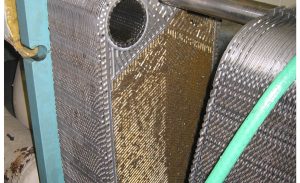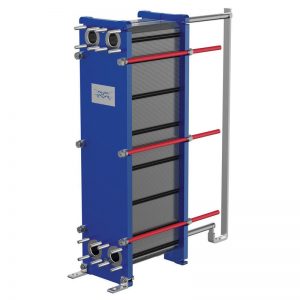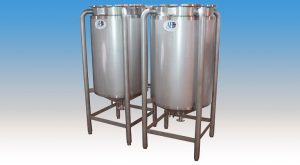Owners of heat exchangers often find that in the spring season as the cooling water temperature begins to rise, their heat exchangers begin to underperform.
Considering that the heat exchangers were most likely designed for the highest cooling tower water temperature that the plant experiences, this underperformance can be frustrating….and best of all avoided in many cases.
The most common cause of underperformance in the spring time is the control method used on the unit. Consider the following common control scheme used on heat exchangers:

The hot side outlet temperature is monitored and the cooling tower water flow is adjusted to maintain a constant hot side outlet temperature.
This control scheme works quite well and is very popular. The disadvantage, however, is that during the winter months the cooling tower water is very cold. As the water temperature drops, the water control valve throttles the water flow to a point far below the original design. This results in low water velocity, higher deposition rates on the heat transfer surface, and possible maldistribution on the water side.
As the solid deposition on the heat transfer surfaces build during the winter, the heat exchangers can foul quickly. This usually isn”t observed by plant personnel until the spring time when the water temperature increases and suddenly the heat exchanger underperforms. At this point cleaning of the heat exchanger is necessary to restore performance.
There are two good options for avoid this situation. One is to allow the cooling tower water at a constant flow year round. This will result in a significant amount of additional process cooling in the winter which may or may not be acceptable in your process.
If the additional cooling is not acceptable, consider a process side bypass control while leaving the cooling water flow constant. In the winter months, less process flow is sent through the exchanger for cooling, then the process stream is remixed at the outlet of the exchanger.
The bypass can be controlled to the desired process side outlet temperature. Obviously, this method is not ideal for fouling process side flows.
Spring time makes a perfect time to clean your heat exchangers. If you need advise on how to care for your heat transfer equipment, please don”t hesitate to contact us.
We can supply parts, service, and cleaning for all make and manufacturers. Consider onsite physical cleaning or a Cleaning-In-Place (CIP) system.




